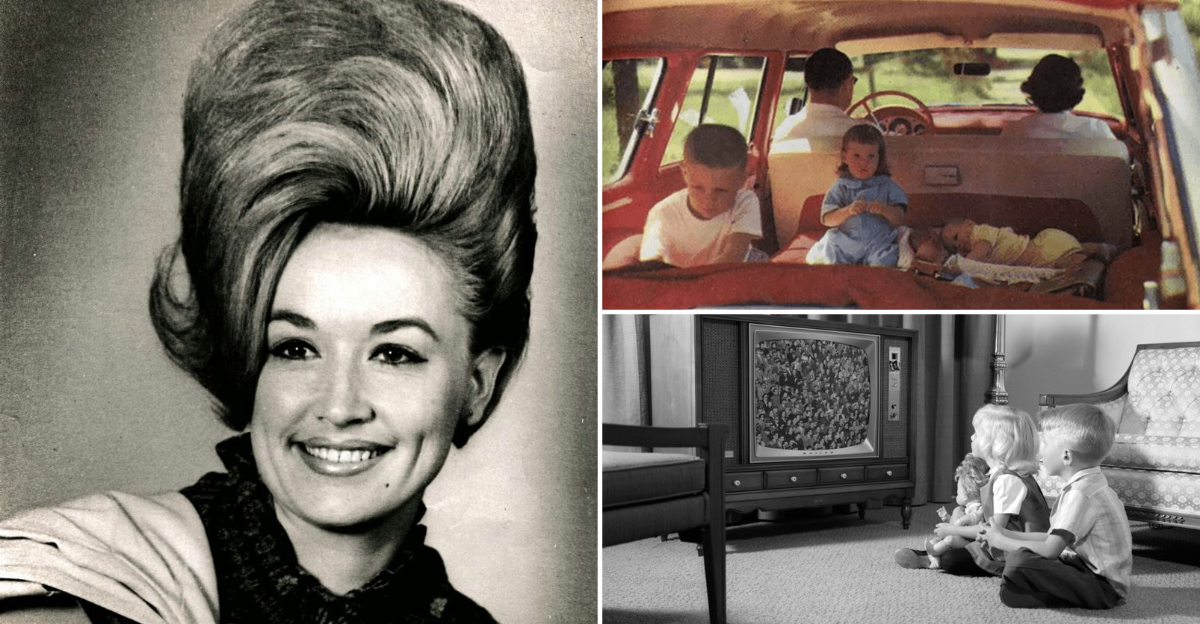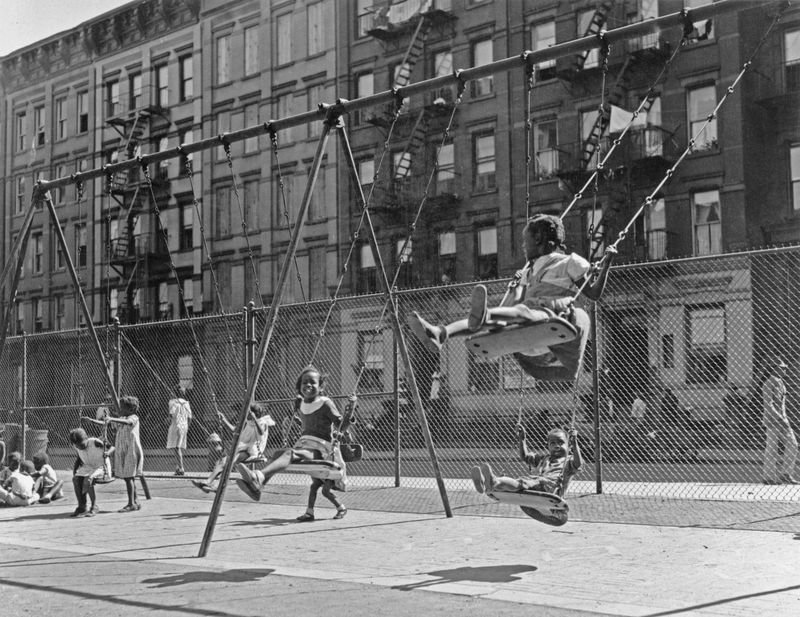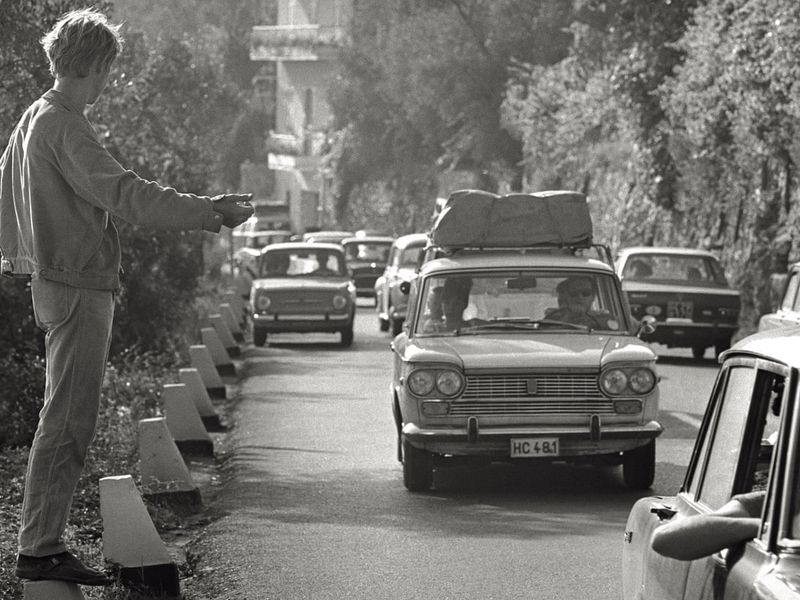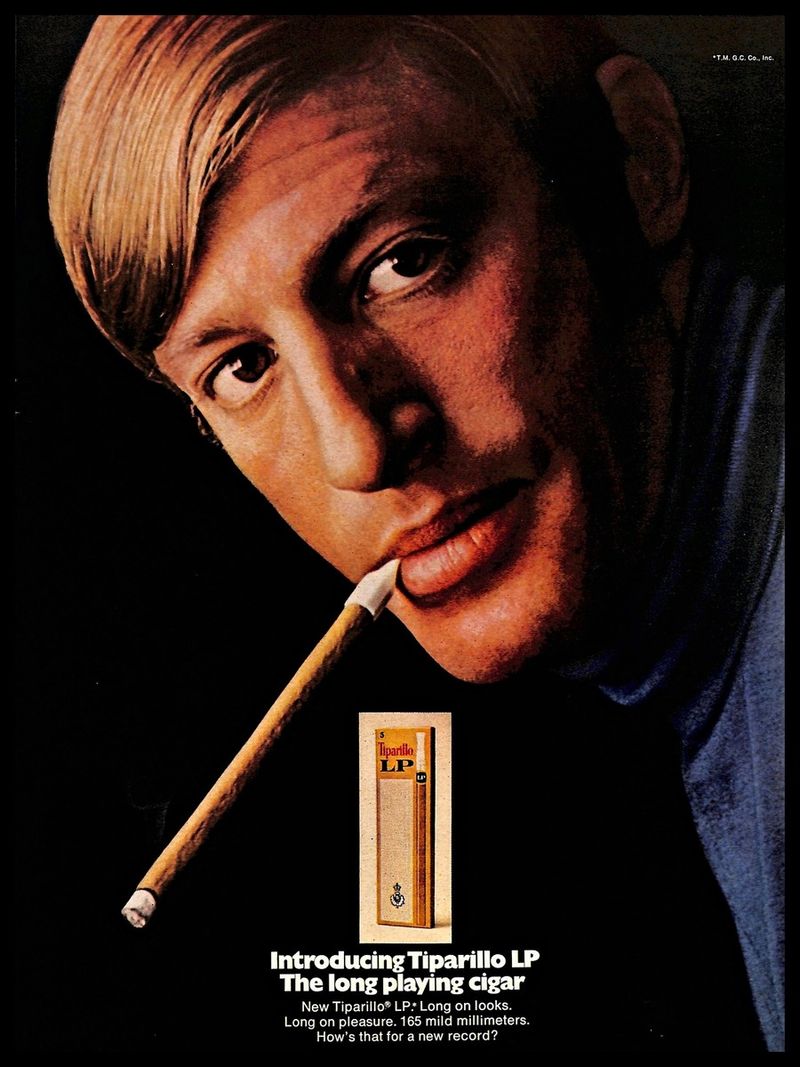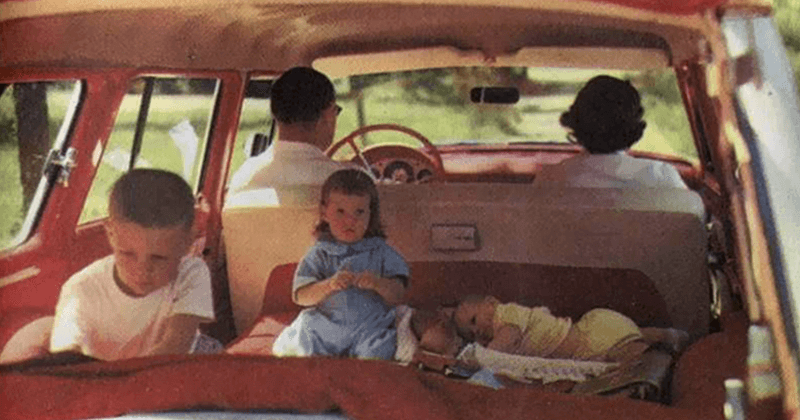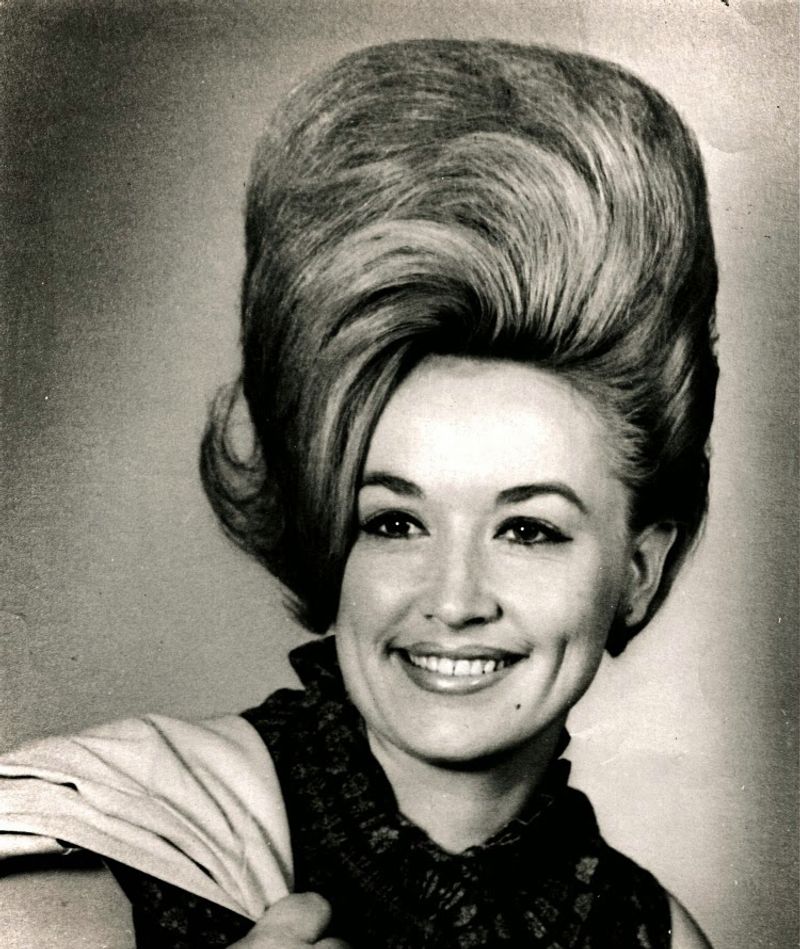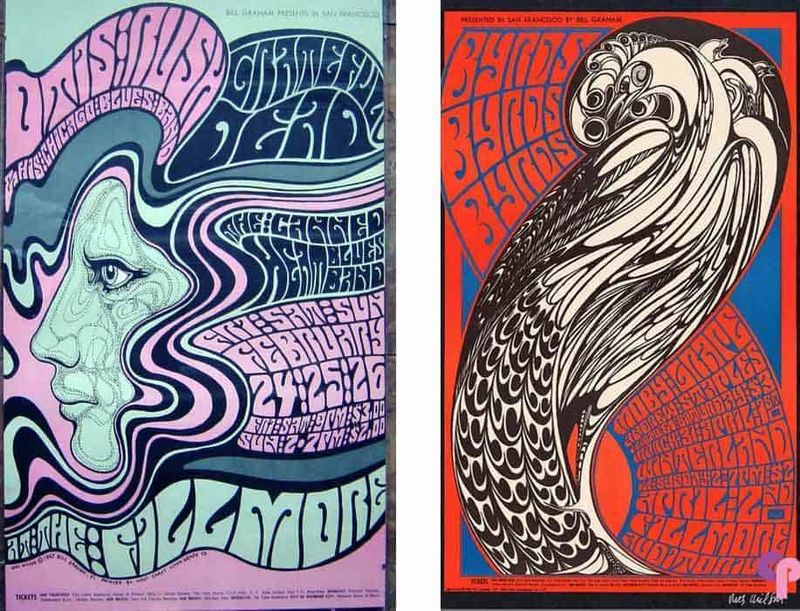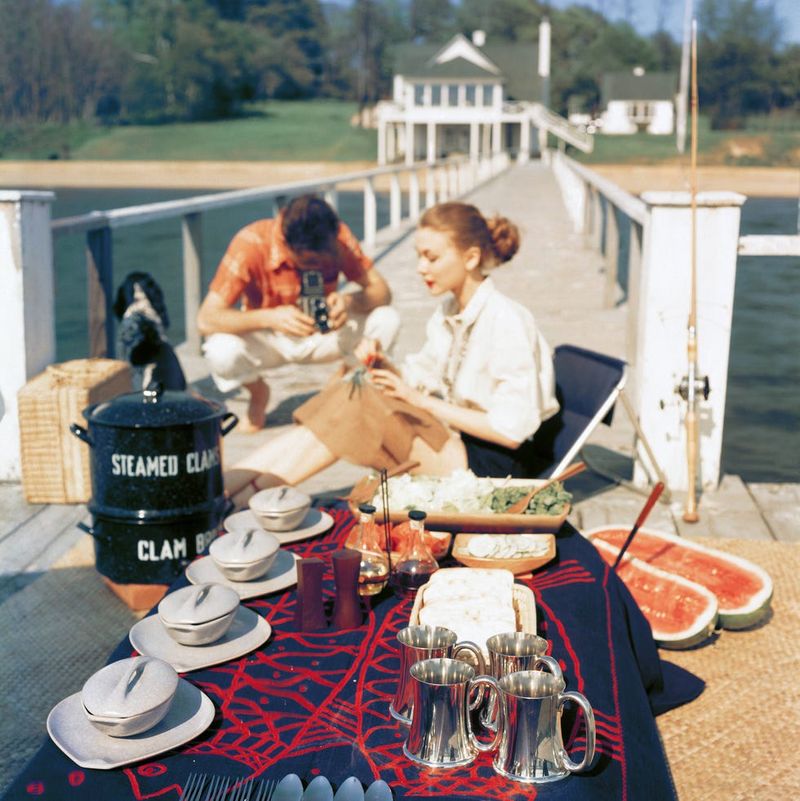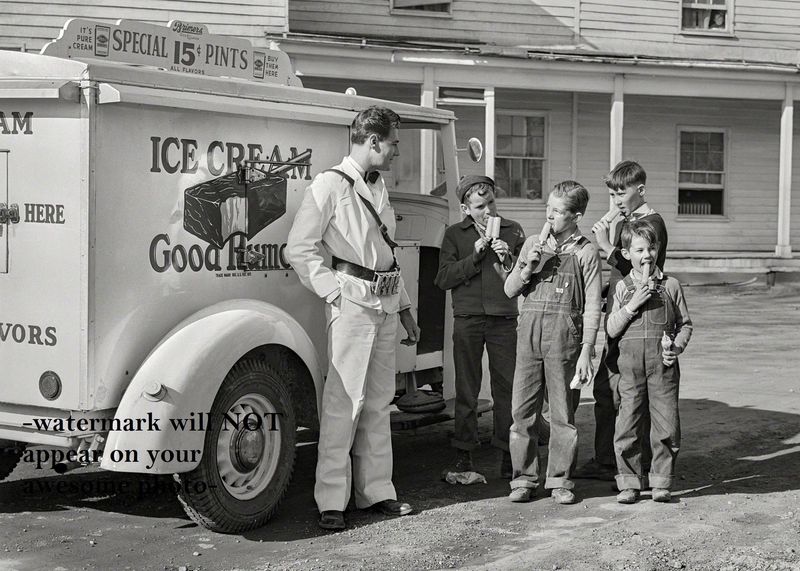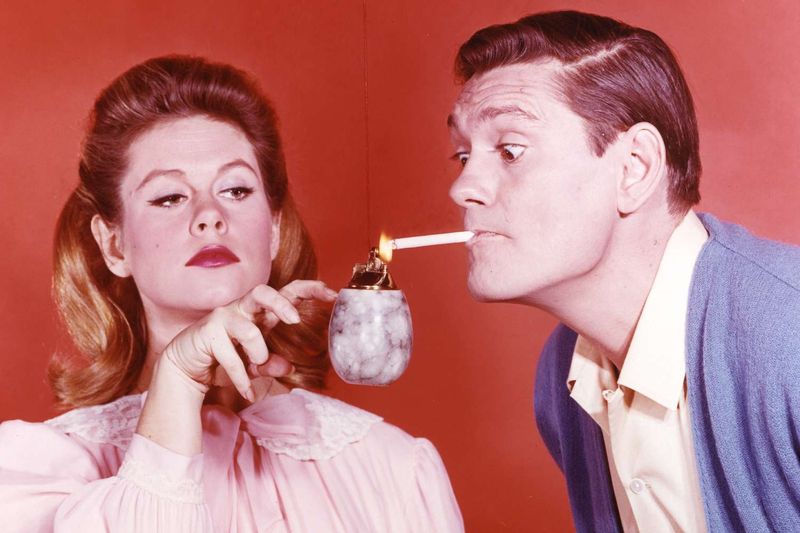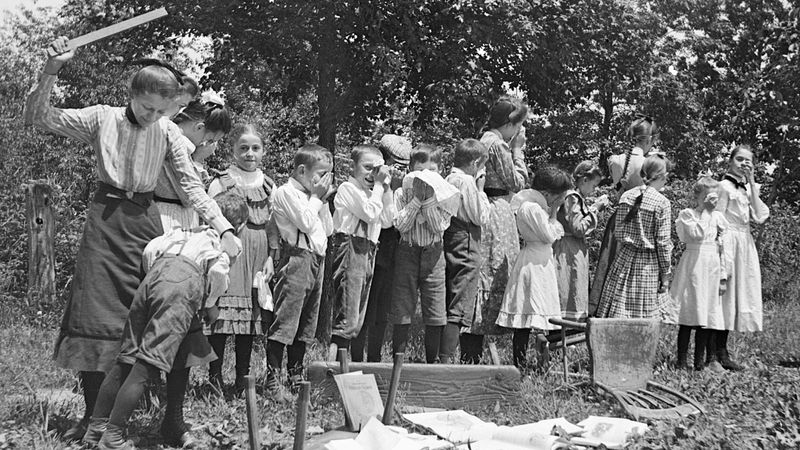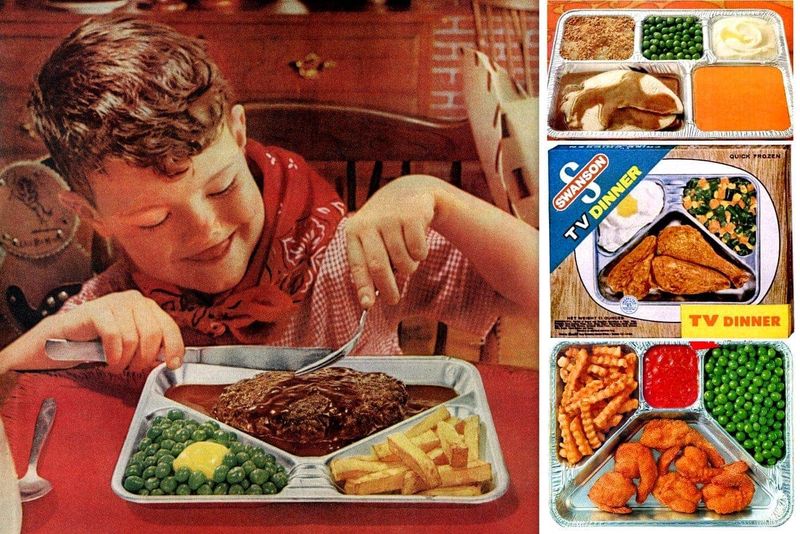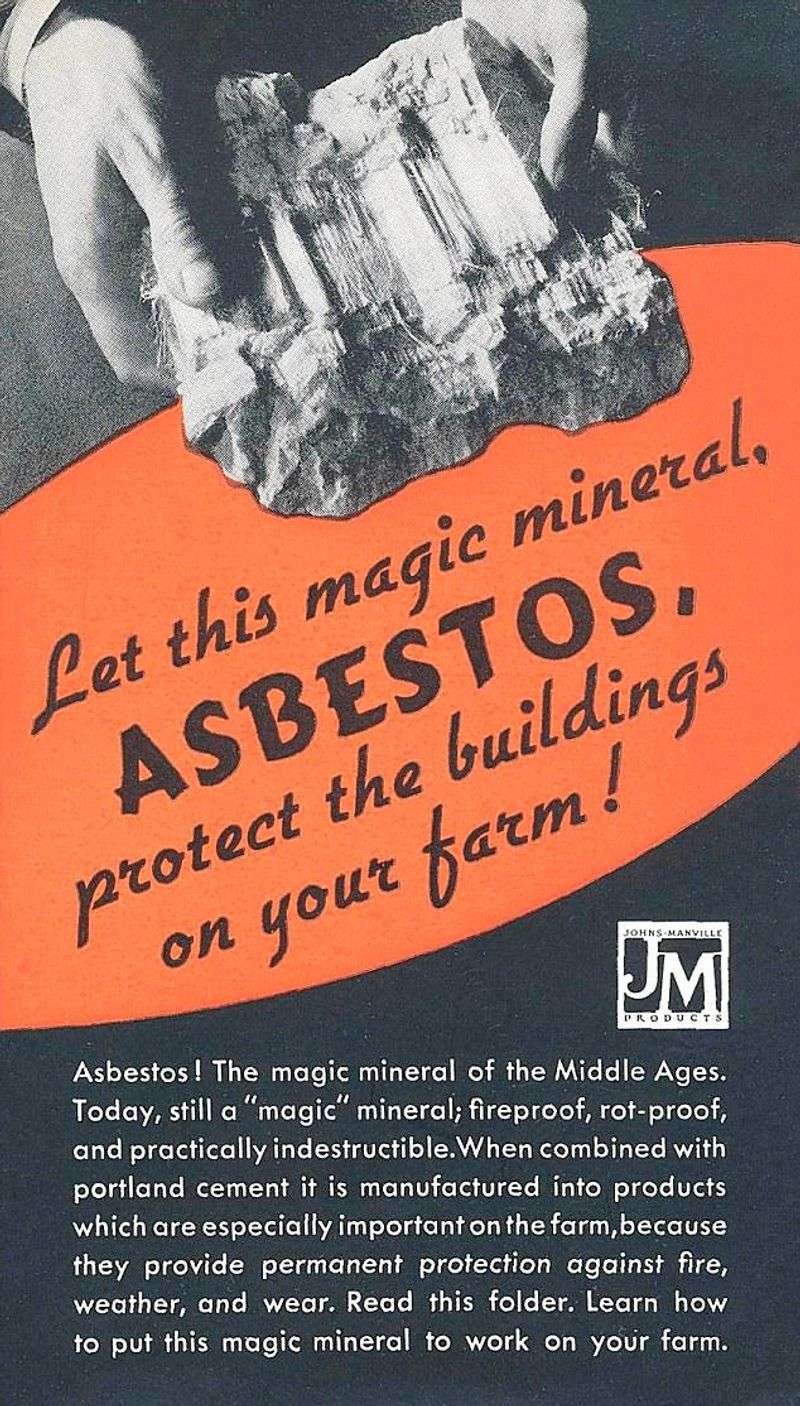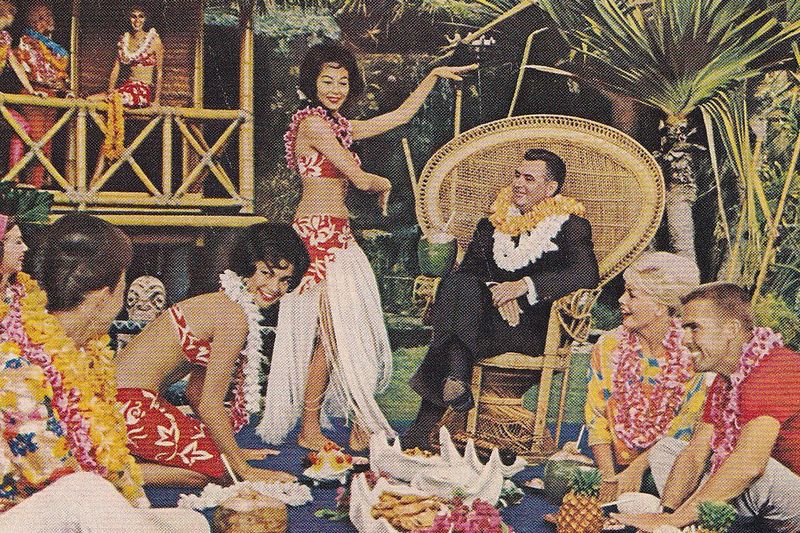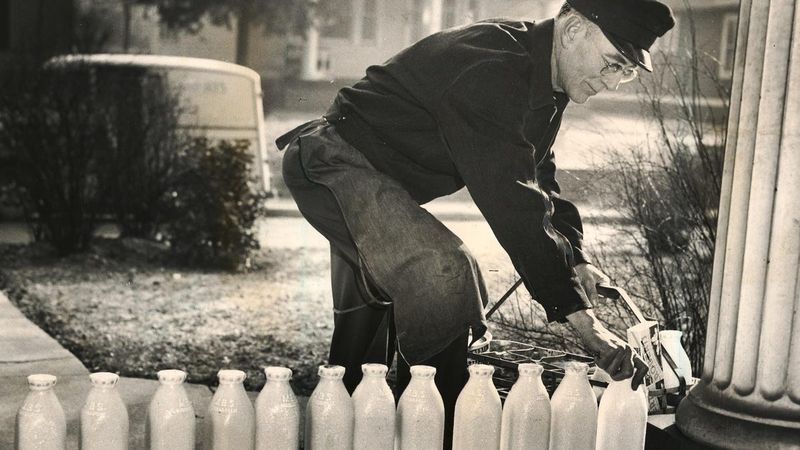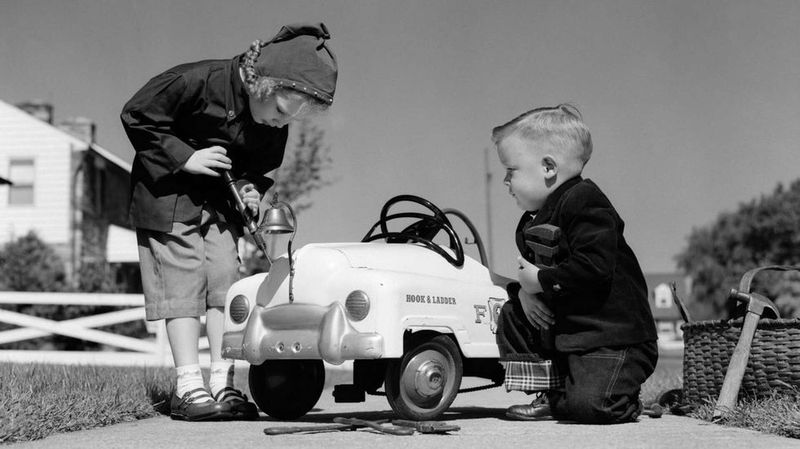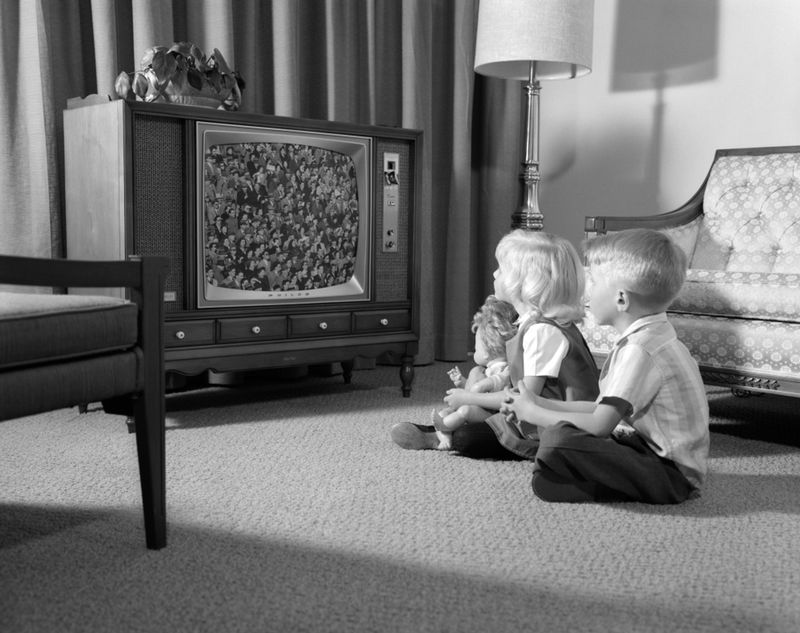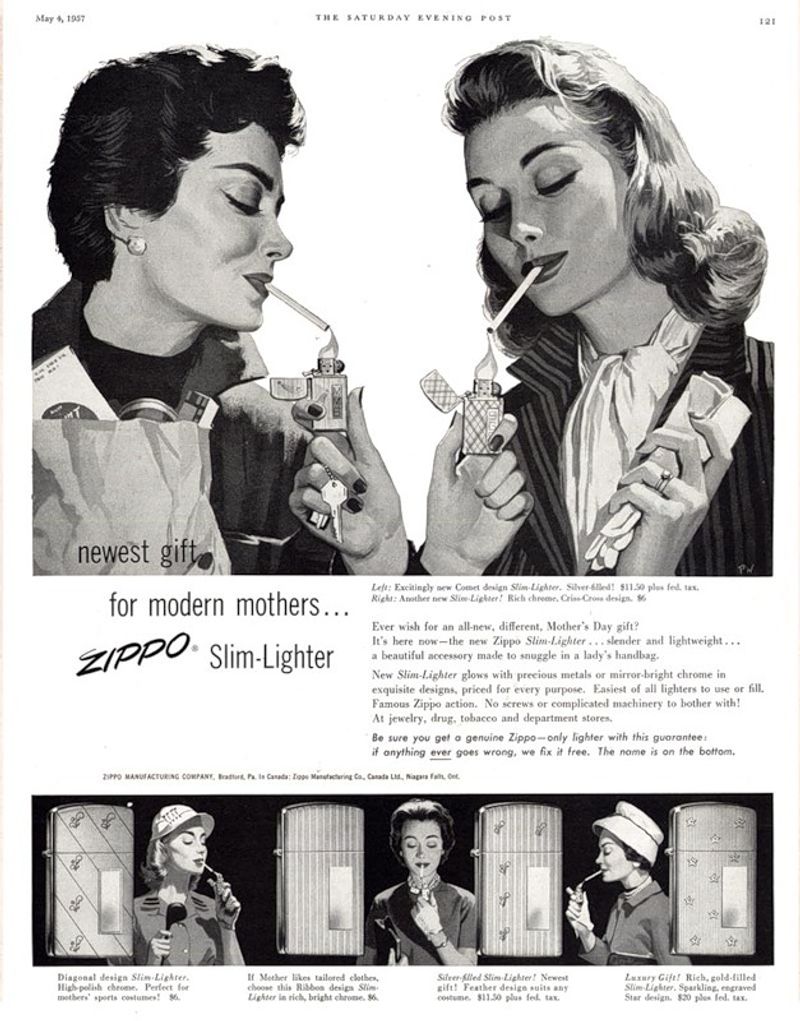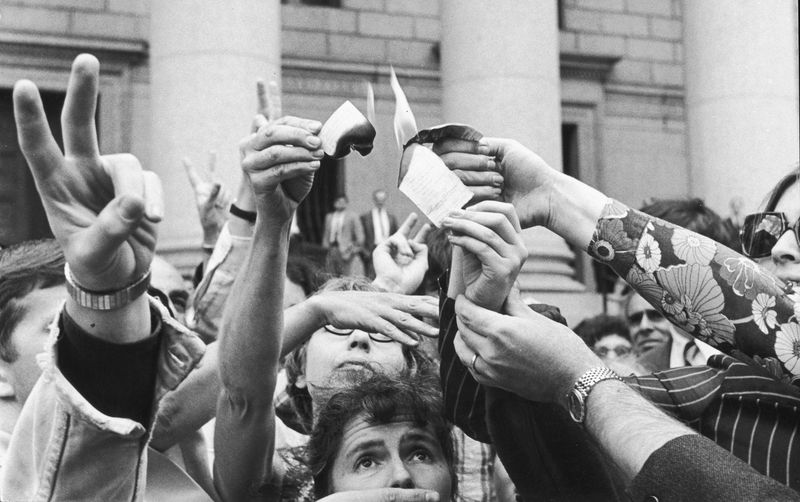The 1960s were a period marked by bold fashion, audacious parenting styles, and cultural norms that might seem baffling to Generation Z today. What was once considered customary by Boomers could appear outrageous to younger generations. From seatbelt-less road journeys to smoking in medical offices, here are 21 practices from the 1960s that would likely be deemed bizarre today.
1. Letting Kids Roam Free All Day
Freedom reigned supreme for kids in the 1960s. Summer days meant leaving home after breakfast and not returning until dusk, guided only by the “be home by dark” rule. Parents trusted the world to be a safe playground. No cell phones tracked their every move. Adventures filled with bike rides, creek explorations, and spontaneous games were the norm. This hands-off approach to parenting fostered independence. In today’s world, the thought of unsupervised kids for hours seems preposterous, raising eyebrows and questions about safety and responsibility.
2. Hitchhiking Was a Legit Travel Option
Sticking out a thumb for a ride was common and considered adventurous, not risky. Hitchhiking symbolized freedom and trust in strangers. It was a cost-effective and spontaneous way to travel, embraced by youth seeking adventure. Today, it conjures images of danger and unpredictability. The openness of the era is striking compared to the caution exercised now. Trust and community spirit defined this travel method. Zoomers might see this as naive, in a world where personal safety is a constant concern.
3. Smoking Literally Everywhere
Everyone smoked: airports, offices, even hospitals. Pregnant women puffed away casually. Today, the idea of lighting up indoors feels alien. Back then, cigarette ads adorned billboards and magazines, promoting a glamorous lifestyle. Restaurants had “smoking sections,” which were just tables with ashtrays. Even kids’ birthday parties weren’t smoke-free zones. The air was perpetually hazy indoors. It wasn’t unusual to see doctors recommending cigarette brands as a means to relax. Attitudes only shifted when health risks became undeniable. It seemed normal then, but to a Zoomer, it would be like seeing a doctor recommending candy for dinner.
4. No Seatbelts, No Problem
Seatbelts were often ignored in the ’60s, seen more as optional than essential. Cars had them, but they were mostly tucked away. It was commonplace for children to stand in the back seat or ride in open truck beds. Safety wasn’t top of mind during road trips. People prioritized convenience and comfort over security. Road trips were lively, filled with games and laughter, unconcerned by today’s standards of safety. If Zoomers were transported back, they’d likely gasp at the carefree attitudes toward such risky behavior.
5. Bouffant Hairstyles
Imagine waking up every day to sculpt your hair into a voluminous bouffant. This iconic hairstyle was a staple for women in the ’60s. It involved backcombing hair to achieve towering heights and setting it with copious amounts of hairspray.
The bouffant was more than just a style; it was a statement. Channeling elegance and sophistication, it required patience and skill. The higher the hair, the closer to the fashion heavens, or so the saying went.
Fun fact: First Lady Jacqueline Kennedy popularized the bouffant, making it a must-have look for women across America.
6. Chain-Smoking Pregnant Women on TV
TV shows depicted pregnant women smoking without criticism. Characters like Lucy from “I Love Lucy” or Laura from “The Dick Van Dyke Show” were seen puffing away on screen. This portrayal reflected societal norms. Smoking was ubiquitous, and the health risks were downplayed. The casual depiction on television mirrored real-life attitudes. Zoomers would find this portrayal shocking. Today, such scenes would be met with public outcry and swift backlash. It highlights the dramatic shifts in public health awareness over the decades.
7. Blasting DDT to Kill Mosquitoes
Summers brought the haze of DDT, sprayed liberally to combat mosquitoes. Trucks would fog entire neighborhoods, children playing nearby. It was seen as a modern solution to a pesky problem, with little concern for health implications. The chemical’s effectiveness was prioritized over potential harm. Today, the environmental and health hazards are widely recognized, leading to its ban. The carefree application of such a toxic substance seems unfathomable now, illustrating how environmental awareness has transformed.
8. Psychedelic Art Posters
Psychedelic art posters were a visual representation of the ’60s counterculture. These posters featured vivid colors and intricate patterns, often inspired by the effects of hallucinogenic substances. They adorned the walls of college dorms and music venues, serving as both decoration and a statement of identity.
The art was not just about aesthetics; it carried messages of peace and love, resonating with the anti-establishment sentiments of the era. Artists like Peter Max became famous for their psychedelic work, influencing everything from album covers to fashion.
Fun fact: The swirly, kaleidoscopic designs of these posters were also meant to enhance the experience of listening to psychedelic rock music. It was a full sensory immersion into the ’60s vibe.
9. Zero Food Safety Standards at Picnics
Picnics were carefree affairs, with little regard for food safety. Potato salad sat under the sun for hours, raw eggs mixed into dishes without second thoughts. The concept of refrigeration was more relaxed. Enjoyment of the moment took precedence over bacterial concerns. Today’s standards would deem such practices reckless. The awareness of foodborne illnesses has changed how we approach food safety. Zoomers might cringe at the thought of such casual attitudes towards potential health risks.
10. Ice Cream Trucks Selling Cigarettes
Ice cream trucks were neighborhood staples, delighting kids with treats. Surprisingly, they also sold cigarettes, no questions asked. This dual offering reflects a time when age restrictions were lax, and health concerns overlooked. Today’s strict regulations and age verification contrast sharply with such casual sales. The idea of a child buying cigarettes from an ice cream truck would horrify modern parents and regulators alike, showcasing how societal norms have evolved significantly.
11. Gender Roles So Rigid, It Hurts
Rigid gender roles defined the ’60s, with men as breadwinners and women as homemakers. Deviation from these norms invited scrutiny. Advertisements reinforced stereotypes, depicting women solely in domestic settings. Questioning these roles was unconventional and often discouraged. Today’s emphasis on equality and freedom of choice starkly contrasts this past rigidity. Zoomers might find these constraints archaic, appreciating the progress towards diversity and inclusivity in modern gender roles.
12. Getting Spanked by Strangers
Discipline extended beyond the home, with strangers authorized to spank misbehaving children. Teachers, neighbors, even store clerks upheld communal discipline. Parents appreciated this involvement, seeing it as community support. Modern views on personal boundaries and child psychology have shifted drastically. Such practices today would lead to legal repercussions and public outrage. Zoomers might perceive this as an invasion of personal space and parental authority.
13. TV Dinners as a Culinary Innovation
TV dinners revolutionized mealtime, offering convenience and novelty. Aluminum trays held meals ready to heat and serve, perfect for busy families. Watching TV while eating became a cultural phenomenon. The allure of modern convenience overshadowed concerns about nutrition and taste. Today’s focus on fresh ingredients and family meals contrasts this trend. Zoomers might marvel at the simplicity and perceive it as a charming yet quaint dining experience from a bygone era.
14. Asbestos in the Walls (and Everything Else)
Asbestos was the go-to material for insulation, fireproofing, and even holiday decorations. Its properties were highly valued, overshadowing health risks. Homes, schools, and public buildings incorporated asbestos extensively. Only later did the severe health effects become apparent, prompting a shift toward safer materials. The casual use of such a hazardous substance is alarming by today’s standards. Zoomers might be astounded by the widespread ignorance of the risks associated with asbestos.
15. Playing with Mercury for Fun
Mercury fascinated children, who played with the liquid metal in science classes. It was common to break thermometers just to roll mercury around, unaware of its toxicity. The tactile and shiny allure overshadowed any perceived danger. Today’s stringent safety measures and awareness of toxic substances make this practice unthinkable. Zoomers might be alarmed by the cavalier attitudes towards such hazardous materials, reflecting a significant shift in educational and safety standards.
16. Tiki Culture
Tiki culture in the ’60s was a blend of exotic allure and escapism, featuring tiki bars, Polynesian-inspired decor, and tropical cocktails. This trend swept through America as people sought to experience the mystique of the South Pacific without leaving home.
Tiki bars boasted bamboo furniture, tiki torches, and vibrant decor, creating a whimsical atmosphere. Drinks like Mai Tais and Pina Coladas, served in quirky mugs, added to the experience, making tiki bars popular social spots.
This cultural fascination was partly driven by soldiers returning from the Pacific after WWII, bringing tales of exotic locales. Today, tiki culture is celebrated as a kitschy retro trend, with its colorful and playful aesthetic.
17. Milk Delivered to Your Door
Daily milk delivery was a staple of household routines. Glass bottles were left on doorsteps, often unrefrigerated for hours. This convenience was appreciated, despite the lack of modern pasteurization standards. The trust in freshness and simplicity marked daily life. Today’s supermarket-centric shopping and refrigeration contrast sharply with such practices. Zoomers might find this quaint yet impractical, reflecting a time when daily conveniences were cherished.
18. No Childproofing—Anywhere
Childproofing was nonexistent in the ’60s. Outlets were exposed, cabinets unlocked, and playgrounds made of metal and concrete. Kids navigated environments filled with potential hazards, fostering resilience and creativity. Modern safety standards and parental vigilance contrast sharply, prioritizing child safety. Zoomers might regard this environment as hazardous, appreciating advancements in safety technology and the emphasis on childproofing today.
19. TV as a Babysitter
Television was a babysitter for many ’60s families. Parents relied on screens to occupy children, trusting the limited channels to provide safe content. Educational value took a backseat to entertainment. Today, the abundance of digital content and parental controls reflect a more selective approach to screen time. Zoomers might view this as simplistic, yet it highlights the evolving relationship between technology and parenting.
20. Moms Smoking and Drinking at Playdates
Playdates provided social time for mothers, who smoked and sipped cocktails while kids played. The yard was a safe haven, and indulgence in leisure a norm. Modern health consciousness and parenting styles emphasize active engagement and supervision. Such casual attitudes towards smoking and drinking around children would raise eyebrows today, illustrating a shift towards healthier lifestyle choices. Zoomers might find this camaraderie quaint but concerning.
21. Draft Cards and the Vietnam Lottery
Turning 18 during the Vietnam War meant draft cards and the lottery, not college apps or voting. This was a time of uncertainty and protest, as young men faced the possibility of deployment. The draft loomed large over futures, prompting activism and societal shifts. Today’s voluntary military service contrasts sharply with this compulsory experience. Zoomers might find the concept of a draft unsettling, highlighting the era’s tumultuous blend of patriotism and rebellion.
